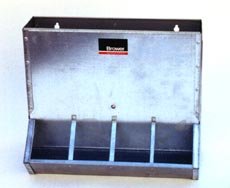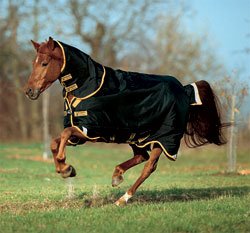 hen an oppressive heat wave scorches pastures and dries up water sources, it may be time to consider creep feeding beef calves.
hen an oppressive heat wave scorches pastures and dries up water sources, it may be time to consider creep feeding beef calves.
Creep feeding is a way to increase weaning weight by supplementing grass and milk for unweaned calves or to supplement milk production in periods of nutritional stress for cows -- is a valid option now, said John Comerford, associate professor of dairy and animal science.
"The decision to creep feed or not to creep feed is a difficult one for producers," says John Comerford, associate professor of dairy and animal science at Penn State. "Like most other aspects of the beef business, it's a complex decision and one that has to be analyzed year after year.This management decision has lots of variables and responses that are not always predictable."
 Each producer has to weigh independently if creep feeding is financially feasible. The logical questions to ask before creep feeding calves are "How much will it cost?" and "How much does it pay?"
Each producer has to weigh independently if creep feeding is financially feasible. The logical questions to ask before creep feeding calves are "How much will it cost?" and "How much does it pay?"
Creep feeding implies there will be purchased feed provided for the calves, usually on a limited basis, along with facilities, equipment and labor to provide the feed.
Comerford offered this sample calculation:
Cost:
40-calf creep feeder costing $1,000 with a 10-year life -- per calf cost: $2.50
Feed at $0.20 per pound x 3.5 pounds/day x 100 days: $70.00
Interest on feed at 4 percent: $0.16
Total estimated cost per calf: $72.66
The payoff:
Additional weaning weight of 0.6 pounds/day (total 60 lbs. at $1.45/pound): $87.00
Net return to labor and management: $14.34
But creep feeding does not always pay off, Comerford cautioned.
"It appears on the surface that creep feeding would be a profitable management tool at any time, but there are other considerations. The total weight gain should not be used as the predictor of additional value of calves. Additional weight on calves usually also implies a lower value per pound when they are sold, so the total value of the calf should be considered."
Other factors involved in creep-feeding calculations include feed efficiency, feed palatability and cost, carcass grade, marbling accretion, preconditioning programs and weaning.


